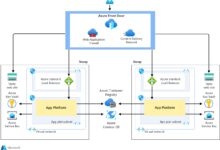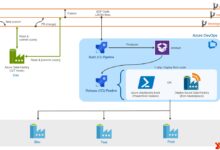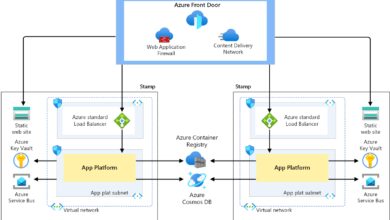msft azure: 7 Powerful Reasons to Master Microsoft’s Cloud Giant
Cloud computing isn’t just the future—it’s the present. And when it comes to dominating the cloud landscape, msft azure stands tall alongside giants like AWS and Google Cloud. But what makes Microsoft Azure so powerful? Let’s dive into the world of scalability, security, and innovation.
What Is msft azure and Why It Matters in 2024

Microsoft Azure, often referred to as msft azure, is Microsoft’s comprehensive cloud computing platform. Launched in 2010, it has evolved into one of the most robust, secure, and globally accessible cloud ecosystems available today. From startups to Fortune 500 companies, organizations rely on msft azure for infrastructure, analytics, AI, and hybrid solutions.
Defining msft azure: Beyond Just Cloud Storage
While many associate cloud platforms with data storage, msft azure offers far more. It’s a full-stack cloud environment that supports over 200 services, including virtual machines, databases, machine learning, IoT, and blockchain. Whether you’re deploying a simple website or managing a global enterprise network, msft azure provides the tools.
- Compute services like Virtual Machines and Azure Kubernetes Service (AKS)
- Storage solutions including Blob, Disk, and Data Lake Storage
- Networking with Azure Virtual Network, Load Balancer, and DNS
- AI and cognitive services such as Azure OpenAI and Computer Vision
According to Microsoft, msft azure operates in over 60 regions worldwide—more than any other cloud provider—ensuring low latency and compliance with local data regulations. This global reach is a key differentiator.
How msft azure Compares to AWS and Google Cloud
When comparing cloud providers, three names dominate: Amazon Web Services (AWS), Google Cloud Platform (GCP), and msft azure. While AWS leads in market share, Azure excels in integration with existing Microsoft products like Windows Server, Active Directory, and Office 365.
For enterprises already using Microsoft ecosystems, migrating to msft azure reduces friction and training costs. A 2023 Flexera report showed that 73% of enterprises use Azure as part of their multi-cloud strategy—second only to AWS but growing faster in hybrid deployments.
“Azure’s strength lies in its seamless integration with on-premises environments and Microsoft 365, making it the go-to choice for hybrid cloud adoption.” — Gartner, 2023
Core Services Offered by msft azure
The versatility of msft azure comes from its vast array of services. These are categorized into compute, storage, networking, databases, AI, and security. Understanding these core offerings helps businesses choose the right tools for their digital transformation.
Compute Power: Virtual Machines, Containers, and Serverless
At the heart of any cloud platform is compute capability. msft azure delivers this through multiple models:
- Azure Virtual Machines (VMs): Scalable VMs support Linux and Windows workloads. You can deploy in minutes and scale automatically based on demand.
- Azure Kubernetes Service (AKS): For containerized applications, AKS simplifies orchestration, monitoring, and scaling of Docker containers.
- Azure Functions: A serverless compute service allowing developers to run code without managing infrastructure—perfect for event-driven tasks.
These services enable everything from legacy app migration to modern microservices architecture. With autoscaling and pay-as-you-go pricing, businesses optimize both performance and cost.
Storage Solutions: From Blobs to Data Lakes
Data is the lifeblood of modern business, and msft azure offers a tiered storage model to handle every type of data:
- Azure Blob Storage: Ideal for unstructured data like images, videos, and backups. Offers hot, cool, and archive tiers for cost optimization.
- Azure Disk Storage: High-performance block storage for VMs, supporting SSD and HDD options.
- Azure Data Lake Storage: Built for big data analytics, this service integrates with Azure Synapse and Databricks for advanced processing.
Security features like encryption at rest and in transit, role-based access control (RBAC), and immutable storage make Azure a trusted repository for sensitive data.
Networking and Connectivity in msft azure
Reliable networking ensures applications perform well and remain secure. msft azure provides a suite of networking tools:
- Azure Virtual Network (VNet): Isolates resources in a private network, enabling secure communication between VMs and services.
- Azure ExpressRoute: Establishes private connections between on-premises data centers and Azure, bypassing the public internet for better performance and security.
- Azure Load Balancer: Distributes traffic across multiple servers to ensure high availability and fault tolerance.
- Azure DNS and Traffic Manager: Manage domain names and route user requests to the nearest data center globally.
These tools are essential for building resilient, low-latency applications, especially for global enterprises.
Security and Compliance in msft azure
In an era of rising cyber threats, security is non-negotiable. msft azure is designed with security at its core, offering end-to-end protection across physical data centers, infrastructure, and applications.
Built-In Security Features of msft azure
Microsoft invests over $1 billion annually in cybersecurity research and employs more than 3,500 security experts. This commitment translates into powerful tools within msft azure:
- Azure Security Center: Now part of Microsoft Defender for Cloud, it provides unified security management and advanced threat protection across hybrid cloud environments.
- Azure Active Directory (AAD): Offers identity and access management with multi-factor authentication (MFA), conditional access policies, and single sign-on (SSO).
- Azure Key Vault: Safely stores and manages cryptographic keys, passwords, and certificates.
- DDoS Protection: Shields applications from distributed denial-of-service attacks with auto-scaling mitigation.
These features help organizations detect, prevent, and respond to threats in real time. For example, Azure Sentinel—a cloud-native SIEM (Security Information and Event Management) tool—uses AI to analyze logs and detect anomalies across millions of events per second.
Compliance Standards Supported by msft azure
For regulated industries like finance, healthcare, and government, compliance is critical. msft azure meets more compliance standards than any other cloud provider, including:
- GDPR (General Data Protection Regulation)
- ISO/IEC 27001, 27017, 27018
- HIPAA (Health Insurance Portability and Accountability Act)
- SOC 1, SOC 2, SOC 3
- PCI DSS (Payment Card Industry Data Security Standard)
- FedRAMP (U.S. Federal Risk and Authorization Management Program)
This broad compliance coverage allows organizations to confidently deploy workloads in regulated environments. Microsoft publishes detailed compliance documentation at Microsoft Compliance Manager, helping customers assess and manage their regulatory obligations.
“Azure’s compliance portfolio gives global enterprises the confidence to migrate even the most sensitive workloads to the cloud.” — Forrester Research, 2023
msft azure for AI and Machine Learning
Artificial Intelligence (AI) is transforming how businesses operate, and msft azure is at the forefront of democratizing AI access. With powerful tools and pre-built models, Azure makes AI development faster and more accessible—even for non-experts.
Azure Machine Learning Studio: Build, Train, Deploy Models
Azure Machine Learning is a cloud-based environment for building, training, and deploying machine learning models. It supports both code-first (Python, R) and drag-and-drop (no-code) workflows, making it ideal for data scientists and developers alike.
- Automated ML (AutoML) accelerates model development by automatically selecting algorithms and hyperparameters.
- Integration with popular frameworks like TensorFlow, PyTorch, and Scikit-learn.
- Model interpretability tools help explain predictions—critical for regulated industries.
- Deploy models as web services or containers for real-time inference.
Companies like BMW and Johnson & Johnson use Azure ML to optimize supply chains, predict equipment failures, and personalize customer experiences.
Azure Cognitive Services: Ready-to-Use AI APIs
Not every organization has a team of AI researchers. That’s where msft azure Cognitive Services come in—pre-trained APIs that add intelligence to apps without requiring deep learning expertise.
- Computer Vision: Analyze images, detect objects, read text (OCR), and generate image descriptions.
- Speech Services: Convert speech to text and vice versa, enable voice assistants, and perform speaker recognition.
- Language Understanding (LUIS): Build natural language processing into chatbots and voice apps.
- Translator Text API: Real-time translation across 100+ languages.
- Face API: Detect, identify, and verify human faces in photos.
These APIs are used in applications ranging from customer service chatbots to accessibility tools for the visually impaired. Microsoft’s partnership with OpenAI has further strengthened Azure’s AI capabilities, especially with the integration of Azure OpenAI Service, which provides access to models like GPT-3.5 and GPT-4 under strict governance.
Learn more about Azure AI at Azure AI Services.
Hybrid and Multi-Cloud Strategy with msft azure
Not all businesses can move entirely to the cloud—many operate in hybrid or multi-cloud environments. msft azure excels here, offering seamless integration between on-premises infrastructure and public cloud services.
Azure Arc: Manage Any Infrastructure from Azure
Azure Arc is a game-changer for hybrid cloud management. It extends Azure’s control plane to servers, Kubernetes clusters, and data services running on-premises, in edge locations, or even on other clouds like AWS and GCP.
- Apply consistent policies, security, and governance across all environments.
- Use Azure Resource Manager (ARM) templates to automate deployments anywhere.
- Monitor and troubleshoot systems using Azure Monitor and Log Analytics, regardless of location.
This means a company can manage its entire IT estate—from legacy servers in a basement to cloud VMs in Sydney—through a single Azure portal. It reduces complexity and increases operational efficiency.
Azure Stack: Bring the Cloud On-Premises
For organizations with strict data residency or latency requirements, Azure Stack brings the Azure experience directly into their data centers.
- Azure Stack Hub: Full-featured platform for hosting Azure services on-premises.
- Azure Stack Edge: A hardware device with built-in AI and storage that processes data at the edge before sending it to Azure.
- Azure Stack HCI: Hyper-converged infrastructure optimized for virtualized workloads and integrated with Azure services.
Industries like manufacturing, defense, and healthcare use Azure Stack to maintain control over sensitive data while still benefiting from cloud agility and innovation.
“Azure Arc and Azure Stack redefine hybrid cloud by giving enterprises the flexibility to run workloads where they need them—without sacrificing management or security.” — Microsoft CEO Satya Nadella
Pricing and Cost Management in msft azure
One of the biggest concerns for businesses adopting cloud services is cost control. msft azure offers flexible pricing models and powerful tools to help organizations optimize spending.
Understanding Azure Pricing Models
Azure uses a pay-as-you-go model, meaning you only pay for what you use. However, there are several pricing options to consider:
- Pay-As-You-Go: Ideal for startups and variable workloads. No upfront cost, billed hourly or per minute.
- Reserved Instances: Commit to 1 or 3 years for up to 72% savings on VMs and databases.
- Spot Instances: Use unused Azure capacity at up to 90% discount—ideal for batch jobs and fault-tolerant workloads.
- Hybrid Benefit: Save up to 40% by using existing Windows Server and SQL Server licenses with Azure VMs.
Microsoft also offers free accounts with $200 credit and access to popular services for 12 months, making it easy to experiment without financial risk.
Tools for Monitoring and Optimizing Azure Costs
To avoid bill shock, Azure provides several cost management tools:
- Azure Cost Management + Billing: Track spending, set budgets, and receive alerts when thresholds are exceeded.
- Azure Advisor: Recommends cost-saving actions like resizing underutilized VMs or deleting unused disks.
- Microsoft Cost Management API: Integrate cost data into internal dashboards and reporting tools.
Best practices include tagging resources for chargeback, using autoscaling to match demand, and regularly reviewing recommendations from Azure Advisor. According to a 2023 study by CloudHealth, organizations that actively manage Azure costs save an average of 35% annually.
Explore pricing details at Azure Pricing Calculator.
Real-World Use Cases of msft azure
The true value of msft azure is best understood through real-world applications. Across industries, organizations are leveraging Azure to innovate, scale, and secure their operations.
Healthcare: Improving Patient Outcomes with Azure
Hospitals and healthcare providers use Azure to store and analyze medical data securely. For example, Partners HealthCare uses Azure to process genomic data and accelerate research into personalized medicine. Azure’s HIPAA compliance ensures patient data remains protected.
Azure AI is also used to analyze medical images—such as X-rays and MRIs—for early detection of diseases like cancer. This reduces diagnosis time and improves treatment accuracy.
Retail: Personalizing Customer Experiences
Retailers like ASOS and Walmart use msft azure to power recommendation engines, manage inventory in real time, and scale during peak shopping seasons like Black Friday.
By analyzing customer behavior with Azure Synapse Analytics and applying machine learning models, retailers deliver personalized offers and improve conversion rates. Azure’s global CDN ensures fast website performance, reducing bounce rates.
Manufacturing: Predictive Maintenance and IoT
Manufacturers deploy Azure IoT Hub to connect thousands of sensors on factory floors. These sensors collect data on machine temperature, vibration, and performance.
Using Azure Stream Analytics and Machine Learning, companies predict equipment failures before they happen—reducing downtime and maintenance costs. Siemens, for instance, uses Azure IoT to monitor turbines and optimize energy output.
“Azure IoT helped us reduce unplanned downtime by 45% and increase overall equipment effectiveness by 20%.” — Siemens Digital Industries
Getting Started with msft azure: A Beginner’s Guide
Whether you’re a developer, IT admin, or business leader, starting with msft azure is easier than ever. Microsoft provides extensive documentation, free training, and hands-on labs to help you get up to speed.
Step 1: Create an Azure Account
Visit Azure Free Account and sign up with your email. You’ll get $200 in credits and access to over 55 free services for 12 months.
Once registered, you can deploy your first VM, create a storage account, or experiment with AI services—all from the Azure portal.
Step 2: Explore the Azure Portal and CLI
The Azure Portal is a web-based interface for managing resources. It’s intuitive and packed with guided tutorials. For automation, use:
- Azure CLI: Command-line tool for Linux, macOS, and Windows.
- Azure PowerShell: PowerShell cmdlets for managing Azure resources.
- Azure SDKs: Libraries for .NET, Python, Java, and Node.js.
These tools allow you to script deployments, automate backups, and integrate Azure into CI/CD pipelines.
Step 3: Take Free Training and Earn Certifications
Microsoft Learn offers free, interactive modules on topics like:
- Azure Fundamentals (AZ-900)
- Azure Administrator (AZ-104)
- Azure Developer (AZ-204)
- Azure Security Engineer (AZ-500)
Earning certifications not only boosts your skills but also enhances your resume. Over 5 million people have earned Microsoft certifications, making them highly recognized in the IT industry.
Start learning at Microsoft Learn.
What is msft azure?
msft azure, or Microsoft Azure, is a cloud computing platform that provides over 200 services including virtual machines, AI, databases, and networking. It enables businesses to build, deploy, and manage applications across a global network of data centers.
How much does msft azure cost?
Azure uses a pay-as-you-go model with no upfront costs. You can start with a free account that includes $200 in credits and access to free services for 12 months. Pricing varies based on resource usage, region, and commitment level (e.g., reserved instances).
Is msft azure better than AWS?
It depends on your needs. AWS has more market share and service breadth, but msft azure excels in hybrid cloud integration, enterprise support, and Microsoft product compatibility. Many organizations use both in a multi-cloud strategy.
Can I use msft azure for AI and machine learning?
Yes. Azure offers powerful AI tools like Azure Machine Learning, Cognitive Services, and Azure OpenAI Service. These enable developers to build intelligent applications with natural language processing, computer vision, and generative AI.
How do I get certified in msft azure?
You can earn Azure certifications through Microsoft Learn. Start with AZ-900 (Azure Fundamentals), then progress to role-based exams like AZ-104 (Administrator) or AZ-204 (Developer). Training is free, and exams typically cost $165.
msft azure has firmly established itself as a leader in the cloud computing space. With its robust security, global reach, AI capabilities, and hybrid flexibility, it’s the preferred choice for enterprises undergoing digital transformation. Whether you’re a developer, IT professional, or business leader, understanding and leveraging msft azure can unlock new levels of innovation and efficiency. The cloud is no longer optional—it’s essential. And with msft azure, the future is already here.
Further Reading:









